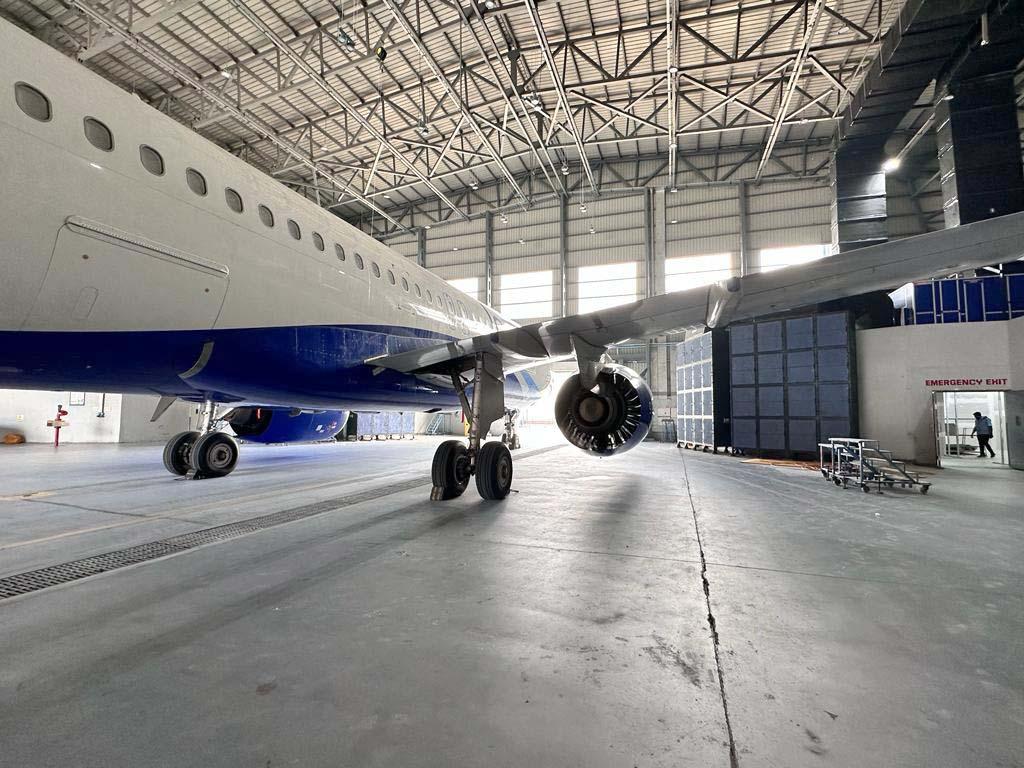
India’s government is making strides to improve the business environment for the country’s MRO segment. A new revision to the country’s goods and services tax could help make MRO investment in the country more attractive.
During a recent goods and services tax (GST) council meeting, a revision to the GST rule for the MRO sector was announced. Moving forward, a uniform 5% tax will be implemented on the import of parts, components, testing equipment, and aircraft tools and toolkits, irrespective of their harmonized system of nomenclature (HSN) code. (HSN is an internationally accepted numerical code used to classify products for taxation purposes.) This revision is likely to help clear the confusion by the customs department over the classification of raw materials.
The Indian government had already reduced the GST on imports to 5% from 18% in 2020 following a push from the MRO industry, but there was confusion in the customs department regarding multiple raw materials, as these materials had a common HSN code with other materials.
So, what was the confusion all about? Pradyumna Joshi, head of logistics at AAR-Indamer Technics, explains this in simple terms: “The last revision in the integrated goods and services tax (IGST) rates for [the] MRO Industry from 18% to 5% in 2020 was based on Harmonized System (HS) classification, and as multiple products (including raw materials) have common HS classification, there was an ambiguity in the IGST calculations for imports.”
He continues: “Due to this ambiguity and the common HS classifications, products used by Indian MRO service providers for aircraft maintenance were being treated and taxed as non-aircraft parts with IGST rates of as high as 37%, depending on the HS classification.” For example, Joshi says spares were taxed at 5%, cleaning solvents at 18%, metal sheets at 28%, adhesives and sealants at 32%, and paints at 37%.
Certain raw materials such as nickel-based alloys, aerospace-grade aluminum, steel and aircraft paint were treated as non-aircraft parts, leading to increased duty and tax. India’s domestic third-party MROs bore the maximum brunt of this confusion. For instance, when an aircraft came to an Indian MRO for a periodic check, part of the work included changing aircraft carpets and curtains. These types of specialized aircraft carpets are not made in India and must be imported. These types of carpet imports received a 12% duty, as would normal rugs or carpets, increasing the cost for MROs and airlines.
This made the Indian MRO industry less attractive, not just for foreign operators but even for domestic operators. In response, many domestic airlines chose MRO providers in other Asian countries where periodic checks are cheaper.
“Now, with this latest revision recommended by the 53rd GST council to fix uniform IGST rates to 5% for MRO services, irrespective of the HS classification, this ambiguity will be resolved,” says Joshi. “It will give a boost to the overall competitiveness of the Indian MRO industry as well as give a relief to the Indian aviation industry.”
The decision is a welcome change for domestic third-party MROs struggling to make their mark in the global MRO market. “This was long awaited and would provide a boost to the Indian MRO industry,” says Sharad Agarwal, CEO of AI Engineering Services.
The Indian industry has thus far been confined to labor-intensive aircraft line and base maintenance work. “For maintenance of engines and components, at least 80% of the entire expense is in the form of imported material. A GST (18-28%) would entail the loss of the entire labor arbitrage India was having,” Agarwal adds.
With this change, Agarwal looks forward to renewed interest from foreign OEMs in setting up shops in India. As maintenance moves up the value chain from line and base maintenance to engines and component overhaul, the component costs begin to outweigh the labor costs progressively.
Air Works CEO and managing director Anand Bhaskar welcomes this move by the government, calling it an extremely “crucial and timely” action. He adds: “The expected reduction in duties and taxes will translate into competitive prices, enhancing the attractiveness of Indian MRO from a global standpoint, while also expanding our addressable market simultaneously by pulling in a greater proportion of global MRO business into the country, making India an MRO hub.”
India’s government is also on an airport expansion and construction spree. According to March data, the government inaugurated 15 airport projects and invested INR 9,800 crore (approximately $1.2 billion), including new terminal buildings at 12 airports in major cities.
The ministry is also planning to implement an allotment process for MROs via open tender, which would provide allotment for 30 years to provide a stable ecosystem for investors. Additionally, it is trying to attract private investment for MROs at eight airports.





